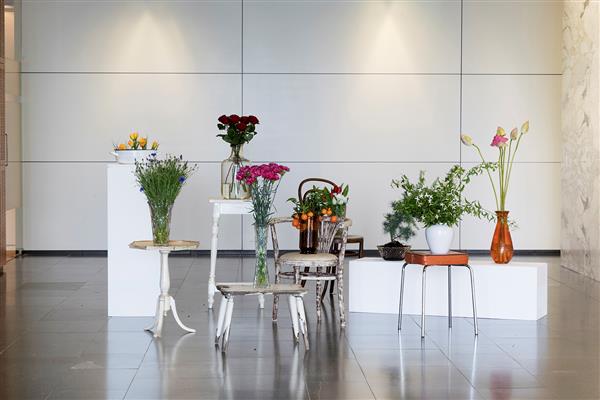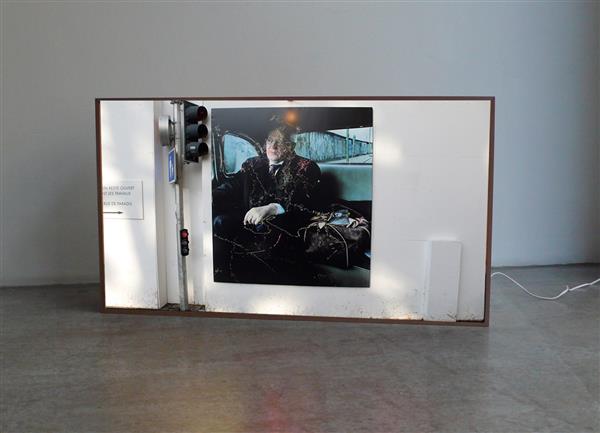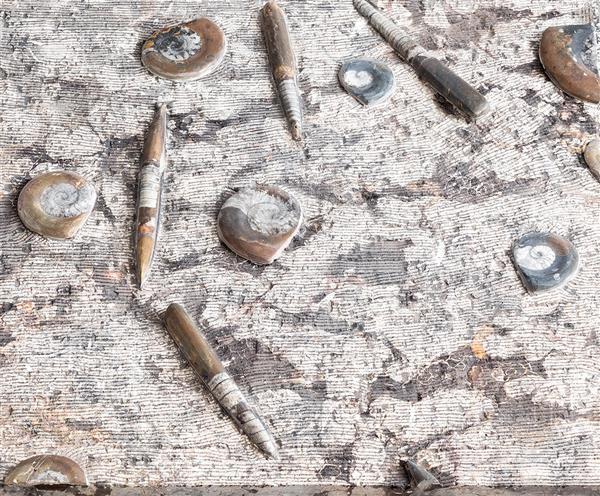The Penultimate (Carnations, roses, orange tree, cedar, tulips, bluets, saffron, crocuses, jasmine, lotus)
Anna Jermolaewa
installation of flowers and plants on pedestals, tables and stools; edition 1/2 + 1 AP
dimensions variable
2017
Acquisition 2018
Inv. No. 0366
Carnations, roses, an orange tree, tulips, saffron, cedar, jasmine, lotus. Cones are carefully placed next to the cedar branch; the tulip heads are tired and drooping, losing their first petals; carnations and red roses are still holding up; a white dog is prowling around the lotus; the little orange tree is sitting in an orange pot; the delicate jasmine buds have not yet opened.
The photos show plants placed on immaculately white plinths or shabby old chairs, stools, or side tables. Anna Jermolaewa, an artist born in Leningrad, Soviet Union (today St. Petersburg, Russia), and now living in Vienna, took most of the pictures for the 2019 evn collection calendar herself and had some photographed. The cover photo assembles all plants arrangements in the lobby of the EVN building in Maria Enzersdorf on a polished stone floor in front of a paneled wall.
But in fact this is not about decorative plants, nor is it an initiative for the embellishment of working life. In her installation entitled The Penultimate, Jermolaewa speaks of political upheavals. The plants are symbols that represent a series of epoch-making popular uprisings in recent contemporary history that have also come to be known collectively as “color revolutions.” On April 25, 1974, for example, the Portuguese Revolution started, with the insurgents wearing carnations in their lapels. Many still remember the events of November 2004 in the Ukraine and the protests on Maidan Square that came to be labelled the Orange Revolution. The roses stand for Georgia in November 2003, when Eduard Shevardnadze was ousted from office and replaced a few months later, following elections, by Mikheil Saakashvili. The Tulip Revolution took place in Kyrgyzstan, overshadowed by immense violence. In Myanmar, the Saffron Revolution broke out when Buddhist monks, who typically wear saffron-colored robes, took the lead in the protests. In the calendar, the popular insurrections are associated with the months of the year. Texts in the appendix provide some insight into the historic events. What looks like décor is in fact commemoration of upheaval, the striving for freedom, and political confrontation.
Text: Thomas D. Trummer, 2018
Translation: Michael Strand, 2018
Continue readingExhibitions
Höhenrausch - Wie im Paradies, OÖ Kulturquartier, Linz, 2021
Wallpaper #1, evn sammlung, Maria Enzersdorf, 2018
Publications
Anna Jermolaewa, The Penultimate (Calendar for EVN AG 2019), Maria Enzersdorf 2019
Anna Jermolaewa, Cologne 2024
Höller, C. (2024). Anna Jermolaewa. The Charm of the Excessice. In: Eikon #126 (5/2024), Vienna 2024, p. 12-15,
Christian Höller: Anna Jermolaewa. The Charm of the Excessive, in: EIKON #126, 2024,



